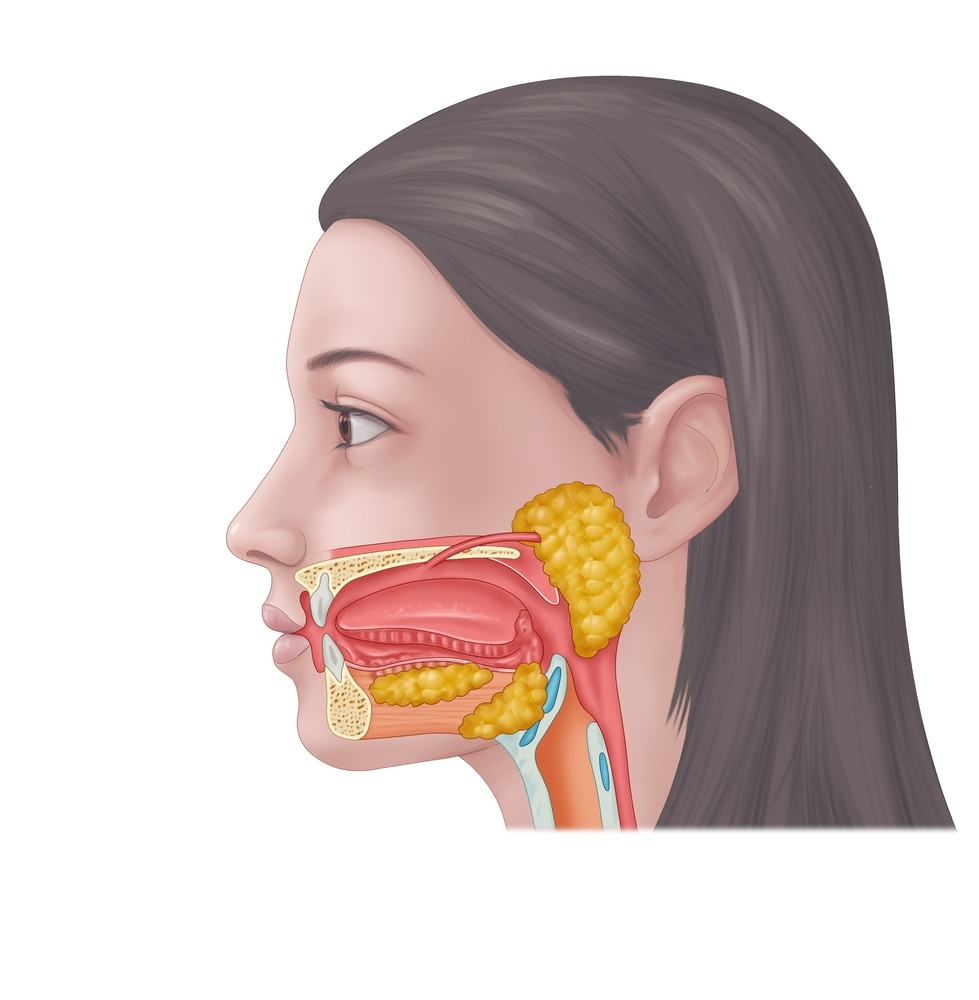Parotid tumors

Parotid gland tumor
Is a rare tumor on one of your salivary glands.
Most parotid tumors are benign (noncancerous), but they can be cancerous.
Both types cause a lump in front of one of your ears.
Surgery treats both types and cures non cancerous parotid gland tumors.
May also use radiation therapy to treat cancerous tumors.
Most parotid tumors are benign (noncancerous), but they can be cancerous.
Both types cause a lump in front of one of your ears.
Surgery treats both types and cures non cancerous parotid gland tumors.
May also use radiation therapy to treat cancerous tumors.
What is a parotid gland tumor ?
A parotid gland tumor is an abnormal mass or tumor on your parotid gland.
Your parotid gland is the largest of your three salivary glands and is found just in front of each of your ears.
Most parotid gland tumors are noncancerous (benign), but about 20% are malignant (cancerous).
A cancerous tumor on your parotid gland is the most common form of salivary gland cancer.
What are the symptoms of a parotid gland tumor ?
Both types of parotid tumors cause lumps that develop in front of one of your ears.
But cancerous tumors are more likely to cause pain than noncancerous tumors.
Other cancerous parotid gland tumor symptoms include :
A sore or lesion on the lump.
Numbness.
Trismus.
One side of your face is larger or smaller than the other side.
Most parotid gland tumors grow very slowly.
You can have one for months, years or even decades before you have symptoms.
Often,find tumors while doing imaging tests for unrelated health issues.
What causes parotid gland tumors ?
We aren’t sure exactly what causes these cancerous and noncancerous tumors.
Research suggests some common possible causes include using tobacco or having radiation therapy for head and neck cancer.
How do you diagnose parotid gland tumors ?
We will do a physical examination focused on your head and neck.
we’ll ask when you noticed the lump and if it’s grown.
The following tests :
Blood tests : Infections may make your parotid gland swell, so your provider may check for signs of leukocytosis (high white blood cell count) to see if an infection is why your parotid gland is swollen or larger than normal.
Imaging tests : we will order imaging tests like computed tomography (CT) scans or magnetic resonance imaging (MRI) scans.
Fine needle aspiration : This test can confirm that a parotid gland tumor is cancerous. Test results also identify the specific tumor subtype.
There are more than 20 cancerous tumor subtypes and 11 noncancerous tumor subtypes.
Analysis also establishes the cancerous tumor’s stage and grade.
The tumor stage is based on tumor location and size, and whether the tumor has spread to nearby lymph nodes or other areas of your body.
The tumor grade is how cancerous cells appear when viewed under a microscope.
Tumor grades run from low to high.
We use test results to develop treatment plans and a prognosis, which is what you can expect to happen after treatment.
What are treatments for parotid gland tumors ?
Treatment typically involves surgery to remove the tumor.
Surgery cures noncancerous tumors and may cure cancerous ones, as well.
But cancerous parotid gland tumors can come back (recur).
Parotidectomy, which is surgery to remove part or all of your parotid gland, is the most common treatment for cancerous and noncancerous tumors.
People with cancerous tumors also receive radiation therapy after surgery.
Can parotid gland tumors be prevented ?
You may not be able to prevent these tumors.
Avoiding known risk factors like using tobacco may lower your risk.
